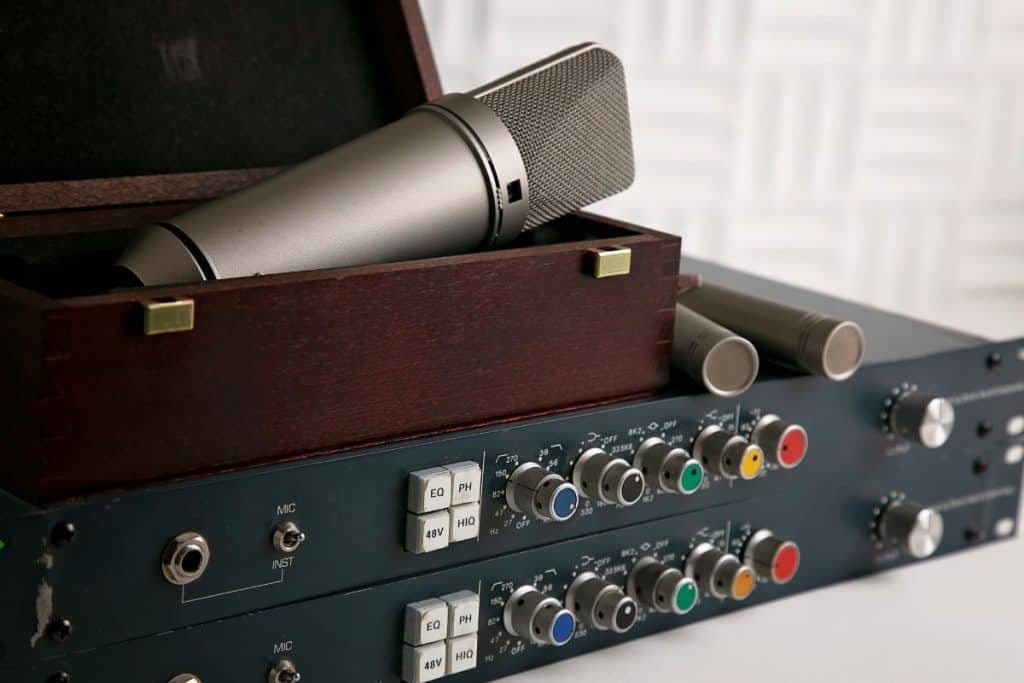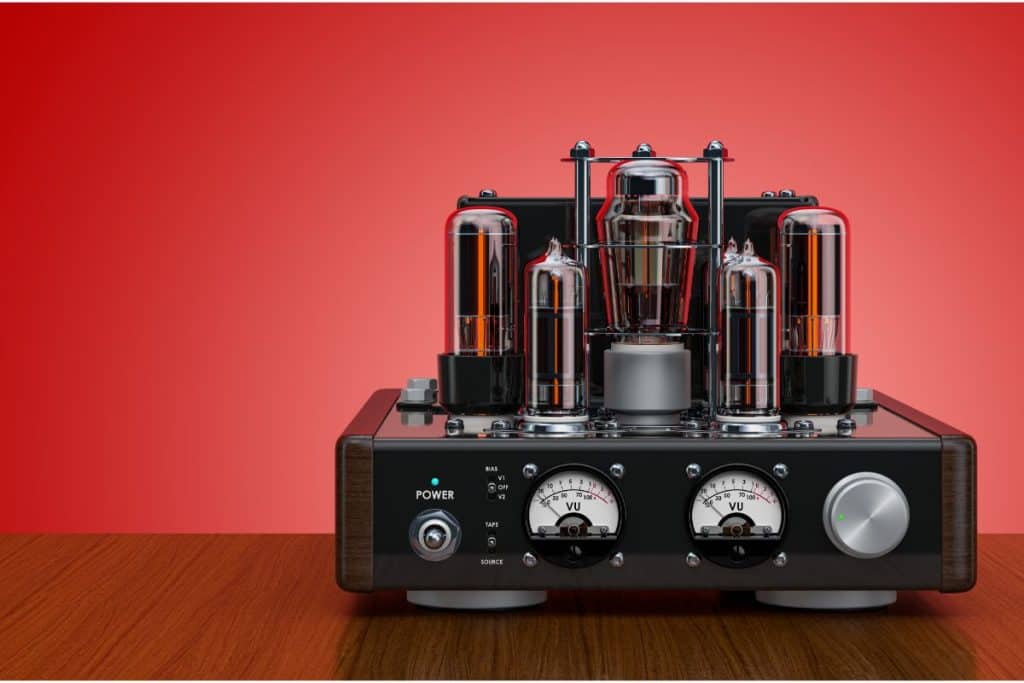If you’re a keen guitar player, you’ll know all about amps. These are objects that take in the electrical signal input of your guitar and amplify (increase) its sound.
There are a few types of amp that you can get, and one of these is a “tube amp”. What are these and how can you bias them? What does “bias” even mean?

Well, we’ve got all the answers! In the guide below, you’ll find out about tube amps and why people bias them.
A word of warning though: you MUST be careful. We’ll talk about safety in a moment, but working on a tube amp can kill – so you must be absolutely safe and careful.
Essential Safety
You should under no circumstances try biasing a tube amp, or even fiddling with the insides of one, if you don’t know what you’re doing. We really, really recommend that you get a professional to do it.
Tube amps are full of charge and can kill you instantly. Their chassis contains 500V DC, which is a voltage that will kill anyone exposed to it.
Even when the amp is unplugged, it is still dangerous and continues to hold charge. You must make sure you unplug it regardless. The tubes inside it get extremely hot and dangerous, so DO NOT touch them.
Additionally, if you’re touching something in the amp then you must keep one hand at your side, which will prevent current being able to run fully around your body – in a worst case scenario.
On top of that, remove any jewelery you’re wearing, because charge will go through that. Short sleeves should also be worn, as well as safety goggles.
But above all, we do not recommend that you try working on your amp at all. You should always get a professional to do it. It’s worth any price that they charge you, because it means that you won’t be risking your life.
What Is Bias in Amps?
Bias is a measure of the amount of current that is flowing through the vacuum tubes within your amp. Changing the bias will change the amount of current, and in general a guitarist wants all the tubes to be working at somewhere around the same strength.
If the bias is too low, this can be referred to as “cold”. The effect of this is that the sound coming out of the amplifier will be less dynamic, sounding weaker and thinner, which isn’t desirable.
However, the tubes will last longer because of it, because they don’t have as much current going through them and they therefore aren’t being worn down quite as much.
On the other hand, if the bias is set too high, then it is known as “hot”. The sound from this will be less accurate, sounding more brash and harsh. On top of that, it will cause the valves to glow hot and the tubes will have a much shorter life.
For that reason, people try to bias the amp and make sure that it’s running between hot and cold – with roughly the same current going through the tubes. If the amount is wrong, it could blow the tubes and damage the rest of the amp too.
When To Check The Bias
If the amp is getting used regularly for a few hours a day, then the bias should be checked about every 3 to 6 months. You may also want to get it checked because you’ve noticed that the noise has started to alter, or because the tubes have started to glow.
Remember, only a professional should bias your amp. It is too dangerous for inexperienced people to try – it can kill.
Checking Amp Bias
Below is a guide on how to check amp bias. DO NOT try it yourself unless you are a professional. This guide is just so that you know what they’re doing, it is not for inexperienced people to follow, because the voltage in an amp will KILL.
So, hire a professional.

A few tools are needed: a multimeter (for measuring electrical values) with alligator clips, and a plastic flat-head screwdrivers.
The amp should be turned on about 30 minutes before the electrical values are measured, so that it’s been warmed up. It must also be plugged into the speakers beforehand, because it could damage the transformers if it isn’t.
Some amps will already have external testing points for the multimeter to plug into, which will make things a lot easier. For that reason, it’s worth finding out at the start whether the amp in question has these points.
First, locate the test points, which should be labeled V1 and V2, and so on.
Remember the safety advice! Do not attempt this yourself. Be wary of charge.
Get the multimeter and set it to DCV>200m. Then carefully insert the red and black ends into the test points, reading what the multimeter says.
Then find the bias knob that’s near the top of the amp. Use the screwdriver to turn the knob very slightly, and notice how the multimeter reading changes. Keep twisting the knob until the reading matches the bias that the amp manufacturers have recommended. Once you’ve done that, do it for all of the tubes.
If the amp hasn’t got the bias points easily accessible, then you’re definitely going to need to go to a professional for help. Why?
This is because the amp chassis would have to be opened up in order to get access to the testing points. This is extremely, extremely dangerous. The chassis contains 500V DC of current in it, which is a voltage that will kill you if you touch it. You shouldn’t be fiddling with this, so get a professional and save your life.
Final Thoughts
You now know all about amp bias, as well as the dangers of it. This is something that will risk your life, so it is essential that you hire a professional to bias your amp.
References
Recent Posts
QuickTime is a vital app for many Mac users, and if you’ve recently bought a new microphone, you might wonder how to use it optimally. QuickTime cannot record audio content if it doesn’t have...
Every microphone leaves a unique signature on the quality of its output. If you’re a podcaster trying to melt your way into your audience’s hearts, a muddy, distorted recording won’t cut it....
